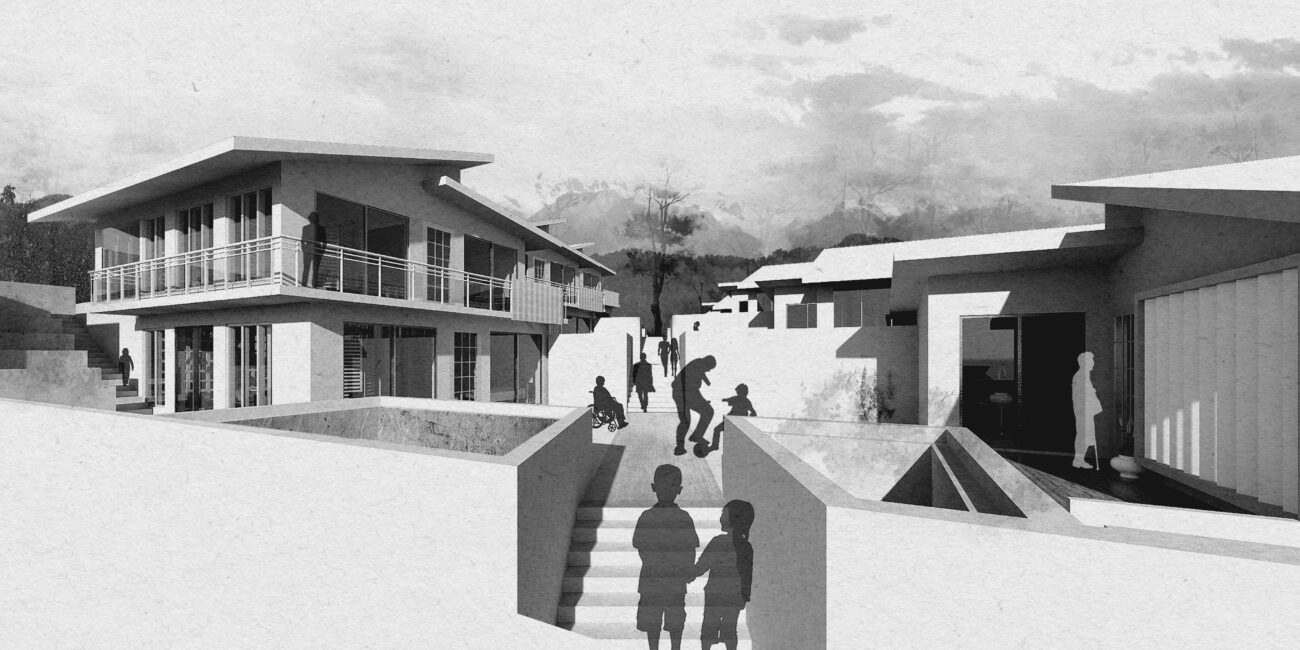
Inclusive Design
A behavioural-psychology research and user-participatory based design model to aim for Inclusive design.
Designers often fail to recognize the diversity of users intended to occupy a designed space. A user, for most of the designs, is usually fantasized as an ideal singular entity guiding all the design decisions, leaving no room for accommodation of different limitations, needs, and desires of different individuals using a given space. These individuals are at the centre of the design for the built environment they live and work in, and yet they hold least significance in the process that shapes their surroundings, which is often the reason for design failure. Although, it may seem easy but it’s the most challenging task to design a space that facilitates everyday activities of different individuals with contrasting needs and expectations.
The solution lies at the core of understanding the requirements, values, and beliefs of multiple end users, while incorporating ‘environment-behavioural analysis research’ & ‘user-participatory design model,’ to overcome such limitations and strive for a wholesome and meaningful design accepted and appreciated by all.
Expressive buildings are celebrated for their aesthetic beauty, but how often are these structures sympathetic towards end user’s limitations and needs. While a design with an ideal user in mind inhibits universal acceptance and adaptation, a design distinguishing user group with specific limitations excludes its usability for others, leading to social isolation. These designs are based on general behavioural assumptions, for instance – elderly individuals are expected to live under constant care and supervision in specialized facilities, but this is only due to the lack of buildings that support independent living in the first place. As suggested by Dorothy Rutherford (a resident of Mirabella Retirement Community in Portland, OR) in an interview, if given a chance to live in such places, people would have a healthier independent lifestyle with higher level of social inclusion. In case of blind individuals, as suggested by Architect Christopher Downey, a multi-sensory experience facilitated by design is of utmost importance in their definition of a place. Carefully designed spaces to enhance certain acoustical, thermal, kinetic, and even olfactory experiences, support their way of navigation through experiential cognitive map of the building. When such design incorporates a simple plan-configuration with limited and clear signages, a strong perceptual access for visual connection, and architectural differentiation through distinctive elements, it automatically eliminates disorientation and enables easy wayfinding for multiple users adding to the legibility of the building. The lack in provision of universal and inclusive design is an immediate repercussion of limited relation between user(receiver) and the designer(provider).
A successful design is not based on assumptions, instead it is a direct derivative of user participation, observation, and analysis. Only through active user input can a designer truly uncover the multilayered nature of universal design. However, the involvement of multiple stakeholders like, owner and administrative groups, often overpowers the decisions making process, thus completely eliminating user input from the design equation. Multiple strategies can be implemented to gather user and stakeholders input, for instance – interviews, work sessions, and questionnaires are some of the most effective forms of user involvement, which allows designer to assess collected data based on the of scope of the project. Focused interviews can surely aid in comprehending respondent’s desires, preferences, and a general understanding of a place, however, it is not effective when a large amount of easily comparable and quantifiable data is required. In such cases, consciously and carefully designed standard questionnaires for specific audience can definitely provide a solution.
All the data collected through these techniques could be overwhelming unless organized and analyzed to convert it into useful information. Different forms of computer programs can facilitate this process, but initial programming and design charrettes must be intuitive and should include easily understandable techniques to gather and improvise significant information, like brown sheets and analysis cards. Finally, this information starts to form certain patterns that can be validated and used to shape the design of a space. These patterns generate designs that reflect user’s preferences and desires for their built environment. For instance – certain design patterns presented by Christopher Alexander reflect universally desired attributes derived through active behavioural observations and user participation. These universal characteristics of a space are highly dependent on the specificity of the user group which might alter the variables, but the core guidelines remain the same
User participation is the key towards making universally acceptable spaces – a design that is not disabling but supports multiple requirements and behaviours, delivering functional designs that are truly cherished by people and continue to be useful and meaningful.
Such places have a higher chance of being taken care of by its users, and therefore, are more sustainable. As Paul Jones suggests, architectural training can influence future generations of architects to establish ‘Inclusive design’ as their main goal towards designing beautiful places.
References:
- A Pattern Language: “Choosing a language for your project,” by Christopher Alexander
- Singer, Natasha, “In a Graying Population, Business Opportunity,” New York Times, Feb. 5, 2011.
- Weisman, Gerald. “Designing to Orient the User,” Architecture: The AIA Journal, 78 (10), pp. 109- 110.
- Lighthouse for the Blind website http://lighthouse-sf.org/
- Coffin and Young, “Who likes this place?” in Making Places for People.
- Zeisel, J. (2006) “Chapter 10: Focused Interviews,” in Inquiry by Design, New York: W.W. Norton and Company,
- Pena, W. and Parshall, S. (2002), “Questionnaires, Interviews +” in Problem Seeking.
- Jones, Paul. “Situating universal design architecture: designing with whom?” July 28, 2014
